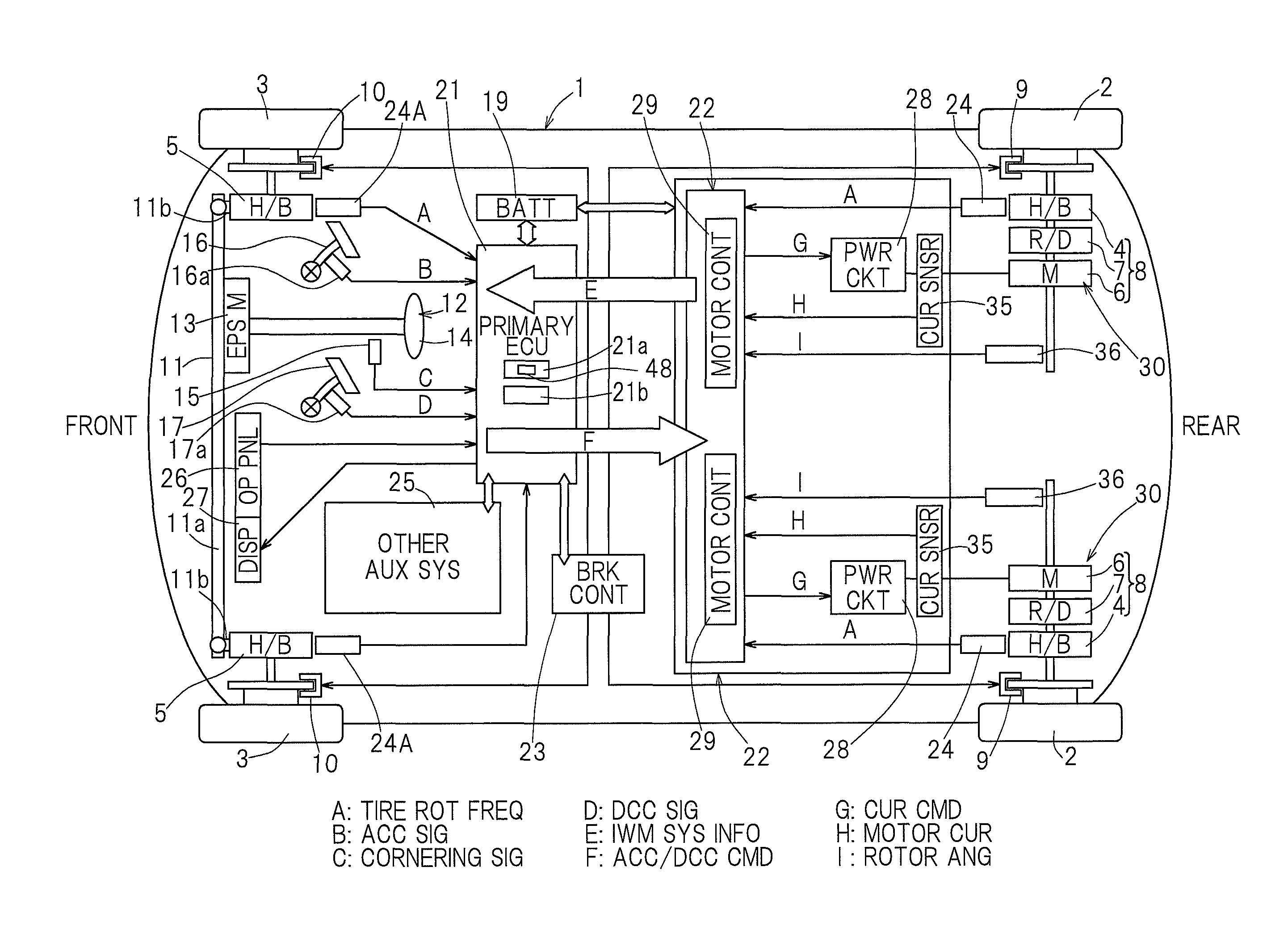Electric vehicle
a technology of electric vehicles and vehicles, applied in the direction of electric devices, process and machine control, instruments, etc., can solve the problems of affecting the vehicle's travel performance, and affecting the stability of the vehicle, so as to simplify the configuration or construction, and improve the accuracy of determining
- Summary
- Abstract
- Description
- Claims
- Application Information
AI Technical Summary
Benefits of technology
Problems solved by technology
Method used
Image
Examples
Embodiment Construction
[0033]An embodiment of the present invention will now be described in connection with FIG. 1 to FIG. 12. The illustrated electric vehicle is a four-wheel vehicle such as shown in FIG. 1 that includes a vehicle body 1 with left and right rear wheels and left and right front wheels, with the rear wheels being drive wheels 2 and the front wheels being steered driven wheels 3. The drive wheels 2 and the driven wheels 3, both equipped with tires, are supported by the vehicle body 1 via respective wheel bearing units 4, 5. In FIG. 1, the wheel bearing units 4, 5 are labeled with “H / B” which is an abbreviation for hub bearing. The left and right drive wheels 2, 2 are driven by respective independent traction motor units 6, 6. Rotation of a motor unit 6 is transmitted via a reducer unit 7 and a wheel bearing unit 4 to a wheel 2. The motor unit 6, the reducer unit 7 and the wheel bearing unit 4 are integrally assembled with each other to form an in-wheel motor drive system 8. The in-wheel mo...
PUM
 Login to View More
Login to View More Abstract
Description
Claims
Application Information
 Login to View More
Login to View More - R&D
- Intellectual Property
- Life Sciences
- Materials
- Tech Scout
- Unparalleled Data Quality
- Higher Quality Content
- 60% Fewer Hallucinations
Browse by: Latest US Patents, China's latest patents, Technical Efficacy Thesaurus, Application Domain, Technology Topic, Popular Technical Reports.
© 2025 PatSnap. All rights reserved.Legal|Privacy policy|Modern Slavery Act Transparency Statement|Sitemap|About US| Contact US: help@patsnap.com



